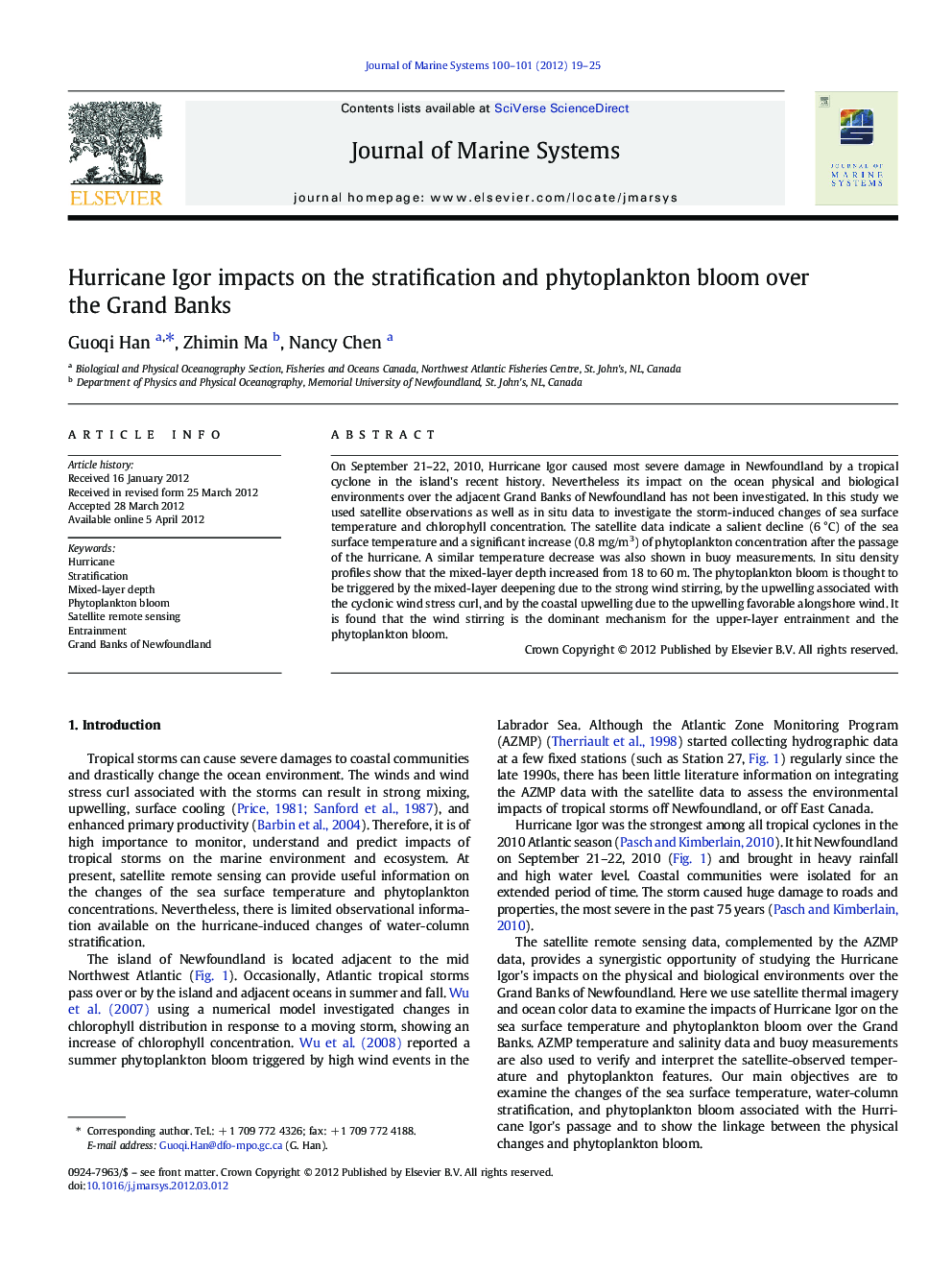| Article ID | Journal | Published Year | Pages | File Type |
|---|---|---|---|---|
| 4548221 | Journal of Marine Systems | 2012 | 7 Pages |
On September 21–22, 2010, Hurricane Igor caused most severe damage in Newfoundland by a tropical cyclone in the island's recent history. Nevertheless its impact on the ocean physical and biological environments over the adjacent Grand Banks of Newfoundland has not been investigated. In this study we used satellite observations as well as in situ data to investigate the storm-induced changes of sea surface temperature and chlorophyll concentration. The satellite data indicate a salient decline (6 °C) of the sea surface temperature and a significant increase (0.8 mg/m3) of phytoplankton concentration after the passage of the hurricane. A similar temperature decrease was also shown in buoy measurements. In situ density profiles show that the mixed-layer depth increased from 18 to 60 m. The phytoplankton bloom is thought to be triggered by the mixed-layer deepening due to the strong wind stirring, by the upwelling associated with the cyclonic wind stress curl, and by the coastal upwelling due to the upwelling favorable alongshore wind. It is found that the wind stirring is the dominant mechanism for the upper-layer entrainment and the phytoplankton bloom.
► Hurricane Igor caused a sea surface temperature decrease of 6 °C over the Grand Banks. ► The storm triggered an increase of 0.8 mg/m3 in the phytoplankton concentration. ► In situ measurements show a deepening of the mixed–layer depth from 18 to 60 m. ► The bloom was triggered mainly by the vertical mixing due to the wind stirring effect.
